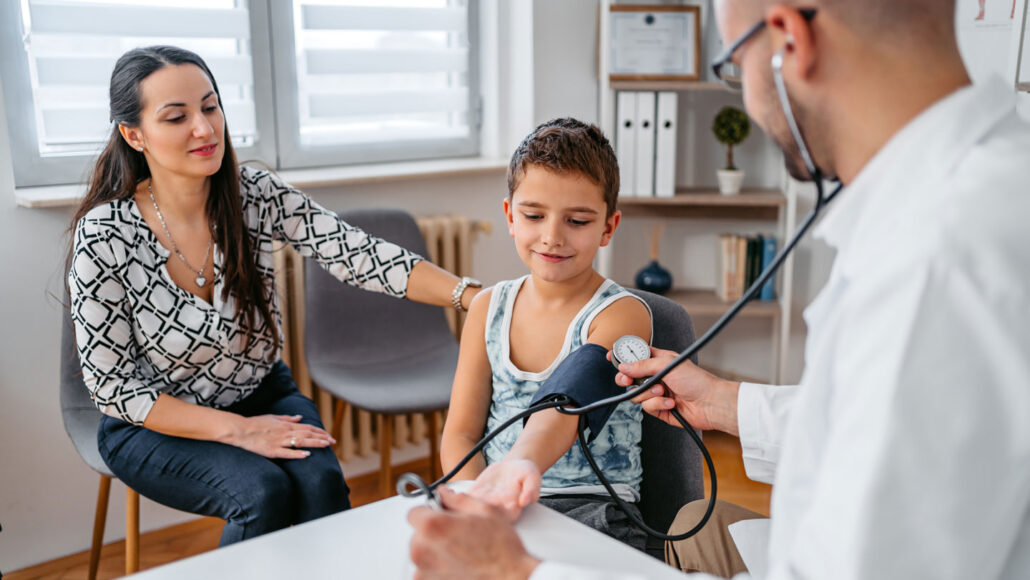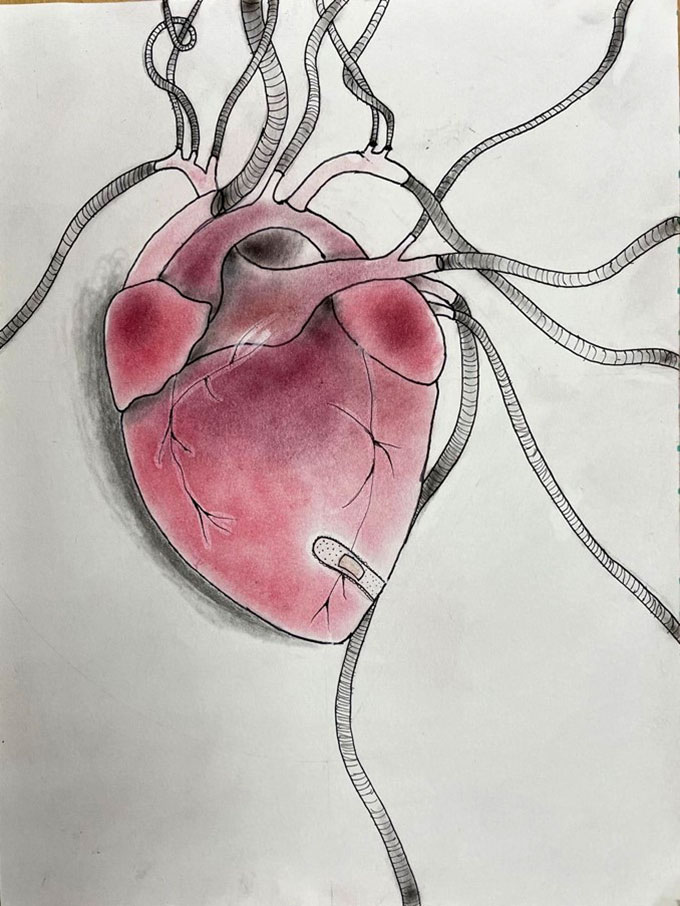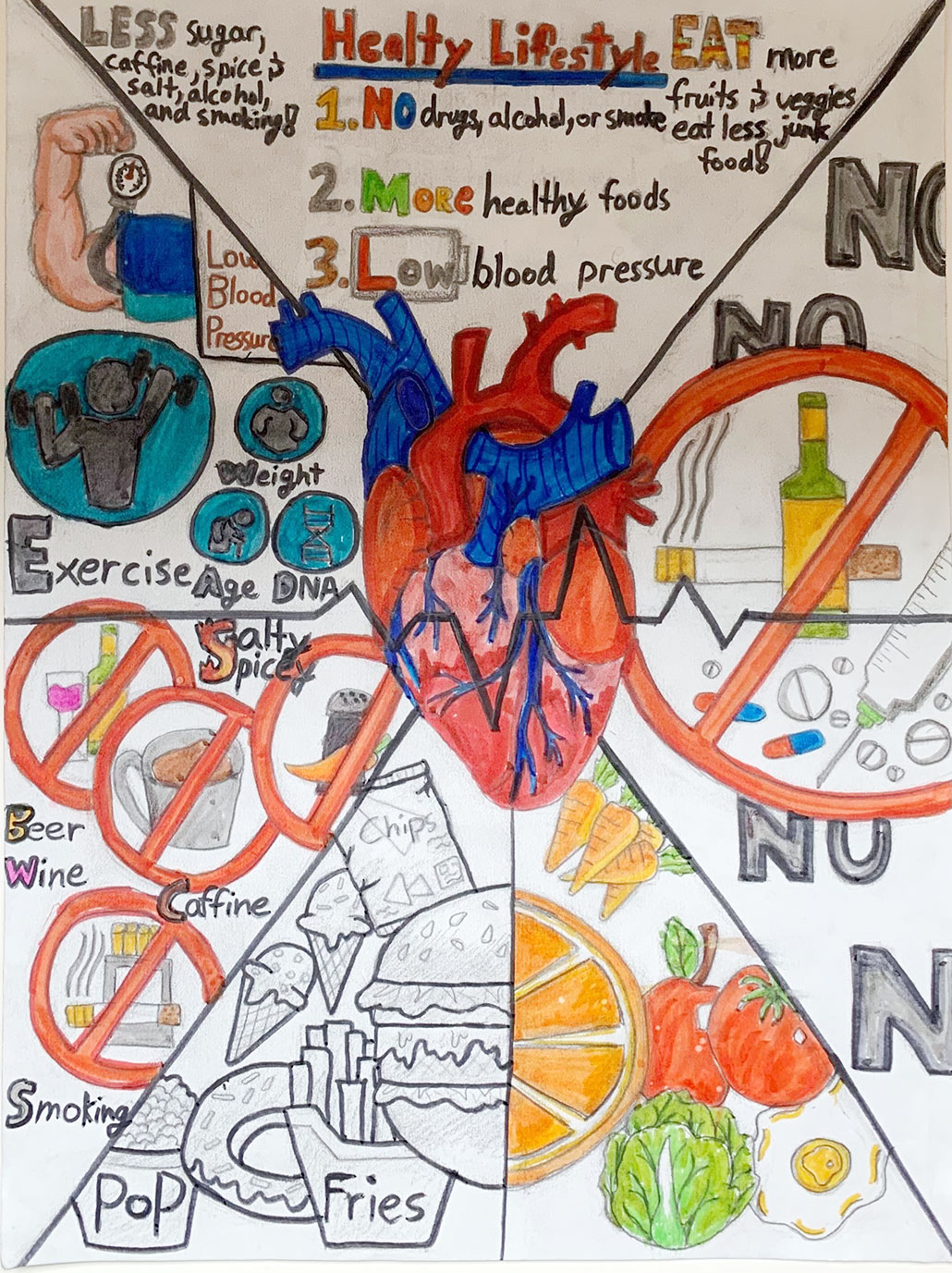High blood pressure can affect kids but often goes undiagnosed
If untreated, it can cause organ damage, even in seemingly healthy kids

Blood pressure can be measured with a cuff on your arm. Dangerously high blood pressure can affect even young kids, and too few doctors are screening for it, two new reports warn.
urbazon/E+/Getty Images Plus
By Erin Ross
Nearly half of U.S. adults have hypertension. You might have heard of it as very high blood pressure. It’s worrisome because high blood pressure has been linked to serious diseases. But hypertension isn’t only a problem for adults. A growing body of research now shows high blood pressure can affect kids — from babies to teens. Unfortunately, this potential danger tends to go undetected in kids.
“In the last two decades, we’ve really proven that elevation of blood pressure in youth, including children and adolescents, is associated with what we call target organ damage,” says Poornima Kunani. She’s a pediatrician with Kaiser Permanente near Los Angeles, Calif. By target organ damage, she means problems in organs affected by high blood pressure: the heart, parts of the circulatory system, kidneys — even the brain.
“Years ago, it was not thought that children could have hypertension unless it was caused by [some disease],” says Bonita Falkner. She’s a pediatrician at Thomas Jefferson University in Philadelphia, Pa. High blood pressure in kids can silently cause both immediate and life-long health problems. Some studies show that high blood pressure makes it hard to think. That can hurt kids’ performance in school. Others have found lasting changes to kids’ hearts, arteries and veins.
There’s been a lot of research on the health impacts of hypertension in kids. But it takes time for doctors to learn about new research and use it to change how they care for those kids, Falkner says. That’s why she coauthored a new statement issued by the American Heart Association. It appeared March 30 in Hypertension. As many as one in every 20 U.S. kids already has high blood pressure, it reports. But because this has long been considered an “adult” problem, many pediatricians don’t properly screen for it.
To do this properly, doctors need to take several readings, sometimes over the course of months, explains Falkner. One quick measurement with a blood pressure cuff may not be enough.
Families and their doctors need to understand that high blood pressure is a problem in many kids, Falkner says — one that should no longer go ignored.
Identifying the problem
Doctors are most likely to monitor blood pressure in kids who have other risk factors, too, such as obesity. But a March 14 study in JAMA Network Open finds that high blood pressure doesn’t affect only those kids. Even lower-weight children and teens can have high blood pressure.

Kunani at Kaiser Permanente was an author of that new study. “We wanted to find out exactly where the problem of hypertension was beginning,” she says. So her team looked at data from 800,000 children from 3 to 17 years old. Then they looked at the kids’ blood pressure again, five years later.
Doctors tend to assess body fat as a sign of how healthy someone’s weight is. To gauge that, they calculate what’s known as a BMI. That stands for body-mass index. BMI compares the ratio of someone’s height to their weight. And a BMI that’s considered “normal” varies by age. For kids up to age 10, a BMI of roughly 14 to 18 is normal. By 16, the normal range rises to between 17 and 23. By age 20, it’s roughly 19 to 27.
Overall, the likelihood that kids would have high blood pressure rose with BMI. But even kids with a BMI on upper end of normal for their age were at risk of having or developing blood pressure that was high — sometimes very high.
What this means, Kunani says, is that doctors should be reviewing more than weight. “We need to ask about [a kid’s] diet and exercise and sleep,” she says. In affected kids, “there’s almost always some unhealthy habit.”
Treatment and prevention
High blood pressure can have long-term impacts on your life and health. So the best way to treat high blood pressure is to prevent it. And the best way to prevent it is through a healthy lifestyle, Kunani says. “You have to feed your mind and your body healthy foods and healthy activities.”

That means spending less time in front of screens and more time being active.
“There is no one kind of physical activity that is better than any other,” says Elaine Urbina. “So kids can just go out and have fun.” Urbina is a pediatric cardiologist in Ohio. Working at Cincinnati Children’s Hospital Medical Center, she studies how to prevent heart problems in children. Any activity that bumps up your heart rate is good, she says, so “go run after your dog or dance to music!”
Eating a healthy diet also is important. Highly processed or salty foods, such as cookies, soft drinks and lunch meats, increase the risk of high blood pressure. Better for blood pressure are colorful natural foods like fruits and veggies. Unfortunately, Kunani notes, not all kids and families have access to such healthy foods.
There are many drugs available to treat high blood pressure. And the same medicines that work in adults can also help kids. It’s important to treat blood pressure early, says Urbina, because once it’s treated, some injuries caused by high blood pressure can start to heal.







